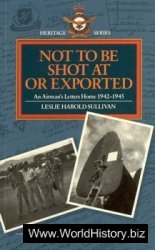Modernism was an intellectual and cultural movement that began at the turn of the 20th century and lasted until the end of World War II. As a term, modernism was first used in Germany during the 1890s and spread across Europe. The continued strain of technological innovation, the introduction of Sigmund Freud’s theories of the unconscious, dream interpretation, and free association, and the growing sense of individual fragility in the face of modern society fueled a cultural rebellion against genteel culture and its rigid moral code and also against convention and tradition. Nonrepresentational or abstract art, free verse, and indirect imagist techniques in poetry and novels were central to this new artistic vision.
In the field of visual art, painters began to explore form and substance, rather than concentrate on fine-tuning realist techniques that were better reproduced with photography. Prevalent artistic movements within modernism included Art Nouveau, fauvism, and expressionist, futurist, cubist, dadaist, and abstract ART. In each case, there was a movement away from representation to using indirect and abstract forms. In the United States, modernism gained its first national notice with the experimental Armory Show of 1913, which brought to American artists the work of European impressionists and expressionists.
The movement toward modernist poetry had one of its chief centers in Chicago with Harriet Monroe’s Poetry: A Magazine of Verse, first published in 1912, and Margaret Anderson’s The Little Review, which began publication in 1914. Anderson drew on the modernist circle that formed in Greenwich Village and included writers and social critics such as Max Eastman, Mary Heaton Vorse, Hutchins Hapgood, John Reed, and Eugene O’Neill. Monroe turned Poetry into the first imagist showcase when she wrote to Ezra Pound to persuade him to recruit his circle of poets to publish in the journal. Other modernist poets such as Thomas Stearns Eliot, H. D. (Hilda Doolittle), Gertrude Stein, E. E. Cummings, and William Carlos Williams contributed to the growing acceptance of free verse and indirect representation of feeling through images associated with modernism.
The modernist impulse similarly influenced historical literature and the genre of the novel, particularly in the years after World War I. While historians Charles and Mary Beard and Carl Becker reworked historical narrative and questioned historical objectivity, novelists such as John Dos Passos experimented with introducing multiple narrative lines and collagelike prose. Most importantly, the ideals of honesty and rebellion against convention brought new, diverse voices into art and literature. Among the artistic movements in the United States associated with modernism was the Harlem Renaissance that brought African-American traditions and racial experience to the forefront of American culture.
See also MUSiC.
Further reading: Abraham A. Davidson, Early American Modernist Painting, 1910-1935 (New York: Harper & Row, 1981); Barbara Haskell, Art & Culture, 1900-1950 (New York: W. W. Norton, 1999).
—Marcia M. Farah




 World History
World History









